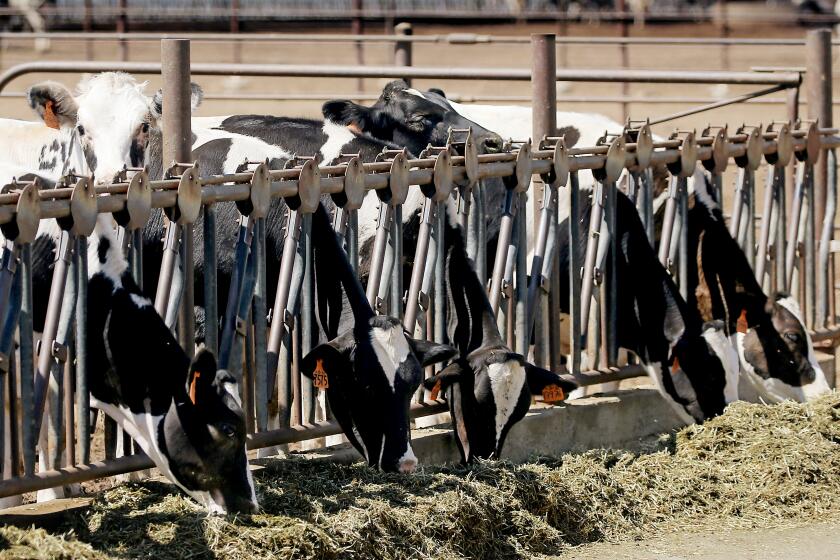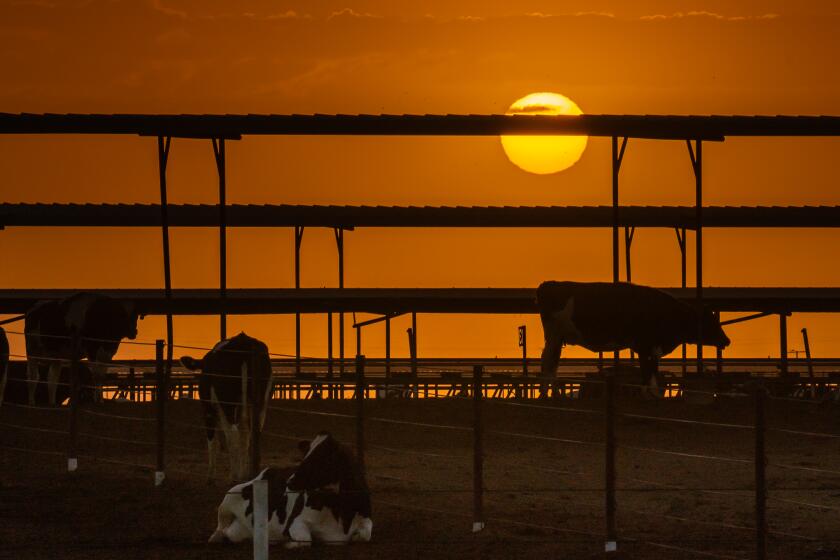Nearly $9 a dozen: Why egg prices are skyrocketing and for how long

- Share via
A bird flu outbreak has Californians paying steep prices for eggs, with consumers sometimes scrambling to locate a carton of eggs amid a disrupted supply chain that has left some store shelves empty.
The average price of a dozen large eggs starkly increased in California in December to $8.97, up from $5.68 in late November, and has remained at that price into the start of the year, according to a U.S. Department of Agriculture report.
Some stores including a Ralphs in El Segundo have posted signs explaining that the recent shortage of eggs is due to “the cost to source cage-free eggs,” a result of California’s Proposition 12, which went into effect in 2022 and requires that hens not be confined in cages.
However, the latest and biggest inflection on the market is due to the avian flu.
Several restaurants have already started raising their prices to reflect higher egg costs.
Restaurant manager Lyndsey Stevens of Boss Hogg’s Country Kitchen in Farmersville, Calif., told KFSN-TV in Fresno that the increased cost has forced the restaurant to search for the cheapest egg prices to avoid passing on the cost to customers.
But on the Central Coast, San Luis Obispo restaurant Bon Temps Creole increased a $15 menu item with two eggs to $17, KSBY reported.
California H5N1 outbreaks have had little impact on overall milk production, but experts warn that outbreaks could soon increase substantially.
Persistent and significant outbreaks of the highly pathogenic avian influenza have decimated California’s poultry flocks and as a result hurt the egg supply chain, according the USDA’s most recent egg report.
Avian influenza viruses spread through direct, bird-to-bird contact. They can also spread through contaminated surfaces or materials, such as manure, egg flats, crates, clothing and hands.
Once the virus is detected, flocks are euthanized and it takes a few months to repopulate a farm’s flock, Bill Mattos president of the California Poultry Federation told the Ventura County Star.
The outbreak has been wreaking havoc for egg farmers since it started in February 2022.
Last month, the USDA reported nine confirmed cases of avian flu in large- and small-scale operations in Merced, Stanislaus, Riverside and San Joaquin counties.
The increased demand for eggs for meals and baked goods during the holiday season made the loss more painful to consumers at the supermarket checkout stands.
Dairy industry experts say the virus entered California after local cows were shipped to another state and then returned to California.
The disease has had the biggest impact on large egg farm flocks from October to January, with the hardest hit coming in December, according to the USDA.
In the last 30 days, the outbreak has affected 10.16 million birds across the U.S., the USDA said. But the number of infected birds is a fraction of the more than 378.5 million egg-laying chickens in the United States, according to data from the National Agricultural Statistics Service.
Still, California has been the most affected state and it continues to be a rocky start to the year for farmers as the USDA reported one new case of avian flu in Stanislaus County affecting 75,200 birds.
The detection of avian flu is higher in the fall and spring because wild birds spread the virus to laying hens as they migrate to their seasonal homes, expert say.
That means that consumers can expect the price and availability of eggs to continue to be volatile, the American Farm Bureau Federation said.
More to Read
Sign up for Essential California
The most important California stories and recommendations in your inbox every morning.
You may occasionally receive promotional content from the Los Angeles Times.













